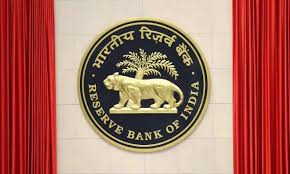4-Tier Structure for Regulation of NBFCs:

The Reserve Bank of India (RBI) has proposed a tighter regulatory framework for Non-Banking Financial Companies (NBFCs) by creating a four-tier structure with a progressive increase in the intensity of regulation.
It has also proposed the classification of Non-Performing Assets (NPAs) of base layer NBFCs from 180 days to 90 days overdue. Earlier in 2020, the RBI announced a host of measures to provide liquidity support to NBFCs. The Department of Non-Banking Supervision (DNBS) of RBI is entrusted with the responsibility of regulation and supervision of NBFCs under the regulatory – provisions contained under Chapter III B and C and Chapter V of the Reserve Bank of India Act, 1934.
- The Regulatory and Supervisory Framework of the Reserve Bank provides for, among other things, registration of NBFCs, prudential regulation of various categories of NBFC, issue of directions on acceptance of deposits by NBFCs and surveillance of the sector through off-site and on-site supervision.
- Deposit-taking NBFCs and Systemically Important Non-Deposit Accepting Companies are subjected to a greater degree of regulation and supervision.
- The focus of regulation and supervision is threefold, viz., a) depositor protection, b) consumer protection and c) financial stability.
- The RBI has also been empowered under the RBI Act 1934 to take punitive action which includes cancellation of Certificate of Registration, issue of prohibitory orders from accepting deposits, filing criminal cases or winding up petitions under provisions of Companies Act in extreme cases.
Aim:
- The proposed framework is aimed at protecting financial stability while ensuring that smaller NBFCs continue to enjoy light regulations and grow with ease.
Proposed Classification of NBFC (The Four-Tier Structure): The regulatory and supervisory framework of NBFCs should be based on a four-layered structure:
- Base Layer:
- NBFCs in the lower layer will be known as NBFC-Base Layer (NBFC-BL).
- For NBFCs in this layer least regulatory intervention is warranted.
- Middle Layer:
- NBFCs in the middle layer will be known as NBFC-Middle Layer (NBFC-ML)
- The regulatory regime for this layer will be stricter compared to the base layer.
- Adverse regulatory arbitrage vis-à-vis banks can be addressed for NBFCs falling in this layer in order to reduce systemic risk spill-overs, where required.
- Upper Layer:
- NBFC in the Upper Layer will be known as NBFC-Upper Layer (NBFC-UL) and will invite a new regulatory superstructure.
- This layer will be populated by NBFCs which have large potential of systemic spill-over of risks and have the ability to impact financial stability.
- There is no parallel for this layer at present, as this will be a new layer for regulation.
- The regulatory framework for NBFCs falling in this layer will be bank-like, albeit with suitable and appropriate modifications.
- If an identified NBFC-UL does not meet the criteria for classification for four consecutive years, it will move out of the enhanced regulatory framework.
- Top Layer:
- Ideally this layer is supposed to be empty.
- It is possible that supervisory judgment might push some NBFCs out of the upper layer of the systemically significant NBFCs for higher regulation/supervision.
- These NBFCs will occupy the top of the upper layer as a distinct set. Ideally, this top layer of the pyramid will remain empty unless supervisors take a view on specific NBFCs.
- If certain NBFCs lying in the upper layer are seen to pose extreme risks as per supervisory judgment, they can be put to higher and bespoke regulatory/supervisory requirements.
Non-Banking Financial Company (NBFC):
- A Non-Banking Financial Company (NBFC) is a company registered under the Companies Act, 1956 engaged in the business of loans and advances, acquisition of shares/stocks/bonds/debentures/securities issued by Government or local authority or other marketable securities of a like nature, leasing, hire-purchase, insurance business, chit business but does not include any institution whose principal business is that of agriculture activity, industrial activity, purchase or sale of any goods (other than securities) or providing any services and sale/purchase/construction of the immovable property.
- A non-banking institution which is a company and has principal business of receiving deposits under any scheme or arrangement in one lump sum or in installments by way of contributions or in any other manner is also a non-banking financial company (Residuary non-banking company).




